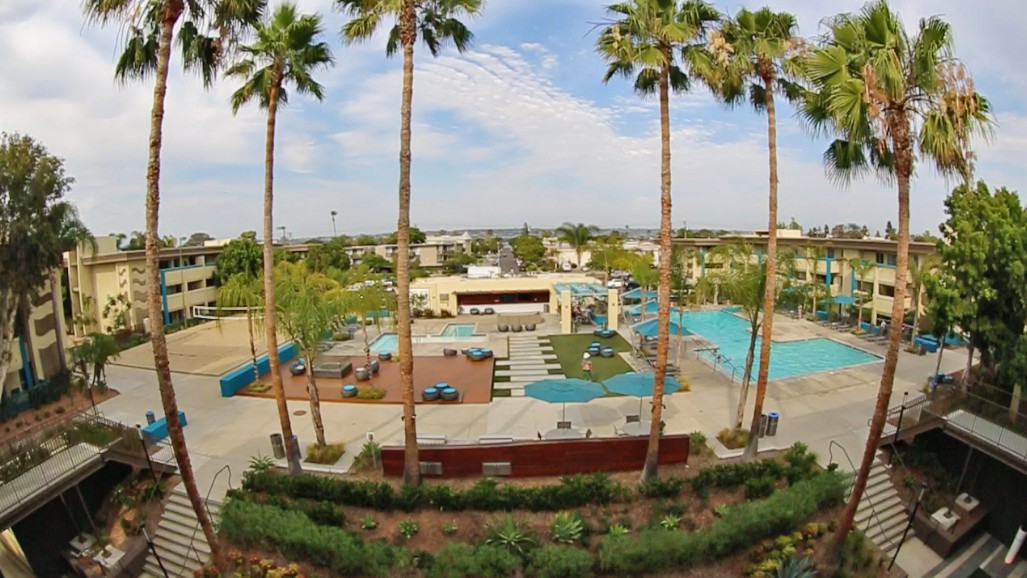Tourist Or Student Visa?
Understanding the difference between tourist and student visas is crucial for planning your study abroad trip, ensuring you choose the right visa based on your intentions and course duration.


The visa you will be traveling with is determined by the intensity of your English immersion. If your main intention is sightseeing, going shopping, or visiting family, then it is suggested to apply for a tourist visa (B1/B2) (or ESTA ifyou are from one of the countries which allows you to travel without visa). If you wish to pursue an academic route, a student visa (F1) is required. However, student visas are only granted to those who plan to study more than 18 hours per week. Courses and stays that are under 18 hours per week are considered by the US Government to be solely for leisure, therefore the only possible visa that is attainable is a tourist visa or ESTA.
All visas grant visa-holders extended periods of stays in the US. Tourist visa holders are allowed to remain in the US for up to 6 months (with ESTA only 90 days); whereas student visa periods vary depending on course length. Student visas last the length of their studies and in addition, include a 60-day-grace period to remain in the US and travel upon completion of your course.
Applying for a tourist visa is less complicated. Be advised that although tourist visas can be valid for up to 10 years. Tourists are only allowed to stay in the US for 6 continuous months visits and enroll in a course for a maximum of 18 hours per week before having to return home.
On the other hand, applying for a student visa requires more planning. After enrollment in your language school in the USA of choice, you will receive an I-20 document. This I-20 document will be required when scheduling your appointment with the US embassy in your home country. You will need to prove that you have sufficient funds to study abroad and you will also need to provide evidence that your entry to the US is solely for academic reasons and nothing more. Some of the documents that prove this are an employment agreement with an employer from your country, exchange agreement from your current non-US university, assets under your name such as local properties, etc.
Now that you know the difference between a tourist and student visa, you are able to start planning your study abroad trip. You are always welcome to contact us if you have any questions!

Frequently Asked Questions
%20(1)%20(Blog).jpg)
Why Your Flatmates Shape Your English More Than You Expect
Your English progress abroad depends less on class hours and more on daily life. This guide explains how housing choices shape real fluency.

Studying English Abroad in 2026: What Has Actually Changed — And What Hasn’t
A clear, experience-based guide to studying English abroad in 2026 — explaining what’s changing, what remains constant, and how real progress develops over time.
.avif)
Ein Tag in San Diego: Was dich während deines Sprachaufenthalts erwartet
Wie sieht dein Alltag während eines Sprachaufenthalts in Kalifornien aus? In diesem Artikel begleiten wir dich durch einen typischen Tag bei CEL San Diego – von einem entspannten Morgenspaziergang zum Strand über interaktiven Englischunterricht bis hin zu Surfen, Yoga oder einem BBQ mit Freunden. Erfahre, wie du in einer modernen Unterkunft mit Pool und Fitnessstudio wohnst, amerikanische Nachbarn kennenlernst und das echte kalifornische Lebensgefühl erlebst – alles nur 5 Minuten vom Pazifik entfernt

From Brazil To California: Learning English Abroad
Gabriel, a 28-year-old from Brazil, works and studies at CEL Pacific Beach in San Diego since January 2023, enjoying the city's atmosphere and planning to extend his stay beyond his initial six-month plan.
.avif)
Étudier l'anglais en immersion : CEL, une école internationale en Californie
Envie d’apprendre l’anglais dans un cadre de rêve ? CEL vous accueille en Californie pour une immersion complète, entre cours dynamiques, rencontres internationales et vraie vie californienne.

Linking Verbs: What Are They & How To Use Them
Master English linking verbs at the College of English Language in California, where tailored classes and fun-packed learning await in San Diego, Santa Monica, and Pacific Beach.
.avif)
Vancouver Weekends: The Perfect Mix of City Buzz and Mountain Calm
Vancouver’s weekends reveal the city’s true soul – forest trails, indie cafés, and sunsets by the sea. Discover the hidden gems students love while learning English at CEL Vancouver.

Three Ways To Build Confidence In Speaking English
Boost your English-speaking confidence with these tips: read aloud, learn in small groups, and practice with multiplayer games or conversation groups. Consider joining the College of English Language in San Diego for effective learning.







.avif)




